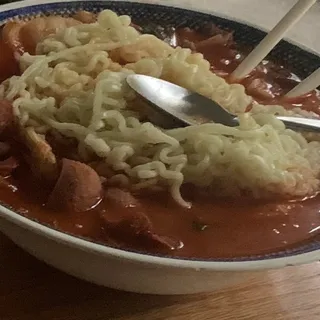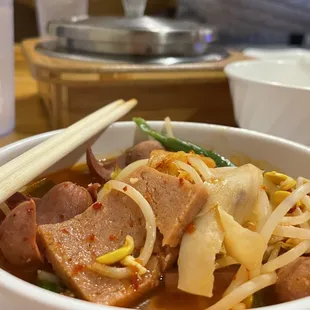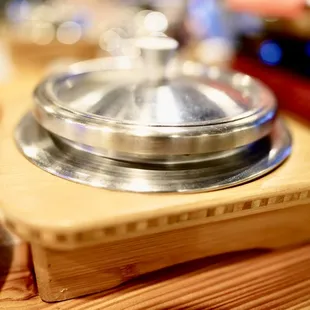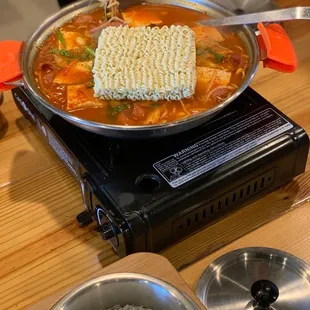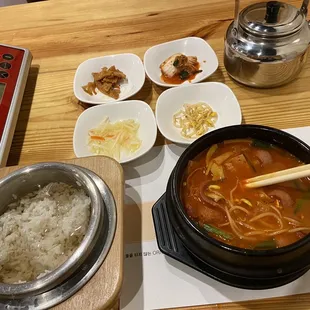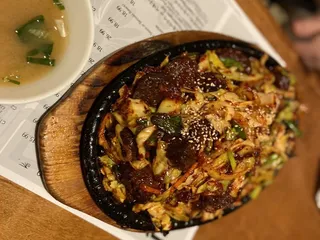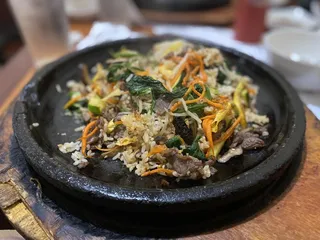I'm embarrassed to admit that as a Korean American in Atlanta, one, I didn't know that this beautiful dish even existed until a few years ago, and two, I didn't know restaurants like this existed. Budaejjigae found its provenance in war-torn Korea, when citizens used what little they had - along with US rations such as luncheon meat, processed cheese, and hot dogs - to create a spicy and deeply satisfying hot pot meal that has now taken Korean street stalls and restaurants by storm. It's not hard to make, but it's difficult to find it outside someone's home...until now. Bally Budaejjigae is tucked away in the corner of an overwhelming complex of restaurants and shops (with Assi Plaza, a Korean supermarket, as its retail anchor), but it's well worth the short and confused search around the labyrinthine square. The folks who work there, particularly the woman who served us, greeted us warmly and didn't blink an eye at our request for an English menu even though we clearly spoke Korean. There's a convenient doorbell-like button at the side of the table that calls over a waitress without you needing to use your voice, and a gas grill waits patiently at your table for the yummies to come. And boy, was it yummy. The kimchi-based broth is spicy, savory, and made me expel a happy "ahhhhh" before I even realize I said something. Orders are per serving size, and the 'Medium 2-3 serving' pot came with rice cakes, tons of sausage slices, spam, and bean spouts (it typically also has ground beef, but they amicably left it out for me when they heard I avoid meat). There are also add-ons, and the tofu and American cheese we chose added the most sumptuous touch. My spendthrift husband balked a little when he discovered we'd essentially be paying a whole dollar per slice of American cheese, but he clammed up once he tasted what that melted loveliness did to the taste of our broth. The accompanying rice comes in a hot metal bowl, which is thoughtfully placed in a wooden base so that clumsy dummies like me don't burn themselves on the servingware. The kettle they bring you is so that you can scoop out the rice and pour water in to cover the rice line. By the end of your meal, all the tasty burnt bits (like the coveted socarrat, or caramelized paella bits, at the bottom of a pan) can create a nice, warm rice porridge for you to end your meal with. I also suspect this makes cleaning far easier on the workers at the end of the meal. Win-win. We had to drive nearly forty minutes out of our way to get here, but by the time we tumbled out of the restaurant with distinctly rounder bellies, we weren't sorry we came.
Read More







